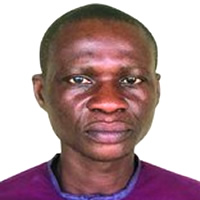Disability
Introduction
In Ghana, persons with disability (PWDs) in general are marginalized and suffer from discrimination on account of their disability status. They are mostly regarded as less productive and not capable of contributing to development compared to their non-disabled counterparts. Accordingly, they are often seen as a burden on society and their unfortunate circumstances are viewed sometimes as a curse or punishment. Furthermore, they have poorer health status, lower educational achievement, lower economic participation rate and higher levels of poverty than people without disability (World Health Organization, 2011).
Improving the conditions of PWDs will contribute to aspects of the overall development of the nation’s human resource. With appropriate and well implemented policies, PWDs can live a more meaningful and dignified life in society while contributing positively to society. In an attempt to understand the situation of PWDs as a guide for policy formulation, the Ghana Statistical Service, for the first time, collected specific data on PWDs at the 2010 Population and Housing Census. The disability question in the 2010 census demands for a multiple response and persons may report having one or more disability types. This chapter, therefore, tends to analyse the population with disability, the type of disability, the distribution of Persons with Disabilities (PWDs) by type of locality and economic activity status.
Population with Disability.
Persons with disability are defined as those who are unable to or are restricted in the performance of specific tasks/activities due to loss of function of some part of the body as a result of impairment or malformation. A person is considered disabled if despite the use of assistive device or supportive environment (such as eye glasses and hearing aids), the limitation/restriction cannot be improved. Sefwi Akontombra has a total population of 82,467 with 2.6 percent having different forms of disability. Out of the 43,603 male population in the district, 2.7 percent are persons with disability while 2.5 percent of the 38,864 female population are also with disability.
Type of Disability
Population by type of locality, disability type and sex is presented in Table 6.1. It must be noted that due to the fact that some persons have multiple disabilities, the types of disability may necessarily not add up to the reported number of persons with disability. Among the PWDs, sight impairment is the most (38.3%) reported disability, followed by emotional disability (23.1%), physical disability (18.1%), speech disability (14.7%) and hearing impairment (14.6%). The least form of disability is Intellectual (8.0%).
Females (38.5%) recorded a relatively higher percentage for sight; and almost the same percentage (38.1%) is reported for males. Emotional disability is however more prevalent among females (24.9%) than males (21.7%). Physical disability is the third highest among the sexes with 20.1 percent for females and 16.4 for males. For both sexes, the prevalence rate of speech is higher for males (15.4%) compared to females (13.7 percent). Intellectual disability is the least reported disability among the PWDs as noted earlier, 7.5 percent among males and 8.6 percent among females.
Distribution of Disability by Type of Locality
For the urban population, 1.3 percent has different types of disability and the percentage is 2.7 percent among the rural population. For PWDs in the urban areas, sight (42.7%) is the most reported, with the males (47.1%) reporting a higher percentage than females (37.8%). Physical disability was reported by 20.8 percent, with 23.5 percent recorded among males and 17.8 percent among females. Hearing is the least reported for males (2.0%) and speech is the least for females (8.9%). Similarly, sight impairment is most reported disability among the PWDs in the rural areas, with 38.1 percent having it. Emotional disability (23.4%) and physical forms of disability (17.9%) are also common in the rural
Disability and Education
Table 6.3 presents the population 3 years and older by sex, disability type and level of education attained in Sefwi Akontombra District. More than one third (44.9%) of persons with disabilities in the district have attained basic level educations, 4.7 percent have attained secondary or higher education, whereas two out of five (47.0%) have never been to school. Persons with physical (53.4%) and intellectual (53.8%) disabilities have the highest proportions that have never been to school whiles the least is recorded among those with other forms of disability (40.8%). The data shows that between four and six out of every 100 PWDs with any form of disability are able to attain secondary or higher education in the district.
Table 6.3 further reveals that more female PWDs (58.7%) than their male counterparts (37.5%) have never been to school, whereas about two percent (3.1%) females compared to 6.1 percent males have attained secondary or higher education. Female PWDs are therefore disadvantaged in relation to educational attainment. Less than ten percent of male PWDs of all types have attained secondary or higher education. The trend is not different from the female PWDs, except that the proportion of male PWDs with secondary or higher education is more than the female PWDs.
Disability and Economic Activity Status
Activity status refers to the economic and non-economic activity of persons during the reference period (the seven days preceding the census night). Persons who worked for pay, profit or family gain, those who did not work but had jobs to return to and those unemployed, are referred to as the economically active. The economically not active are persons who did not work and were not seeking for work. These include homemakers, students, retired persons, disabled and unable to work and those with ill-health or persons who are too young/old to work.
Table 6.2 presents information on the economic activity status of persons with disability (PWDs), aged 15 years and older. Persons with hearing disability (82.0%) reported the highest proportion among all disability types who are employed while intellectual disability recorded the least (43.3%). Except for emotional disabilities (1.6%) the proportion of persons with disabilities who are unemployed is less than one among all disability types. More than 50.0 percent of persons with intellectual disability (55.1%) are economically not active. The economic activity status of male and female persons with disability follows the trend at the district level.
Date Created : 11/20/2017 4:41:02 PM






 facebook
facebook twitter
twitter Youtube
Youtube TOLL FREE 0800 430 430
TOLL FREE 0800 430 430 +233 593 831 280
+233 593 831 280 GPS: GE-231-4383
GPS: GE-231-4383 info@ghanadistricts.com
info@ghanadistricts.com Box GP1044, Accra, Ghana
Box GP1044, Accra, Ghana